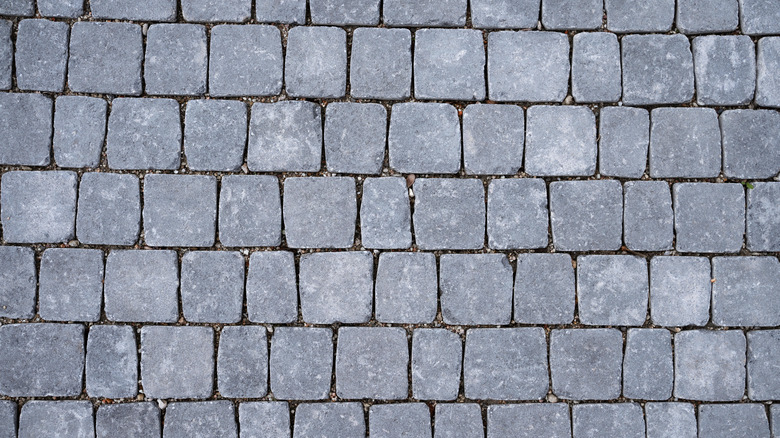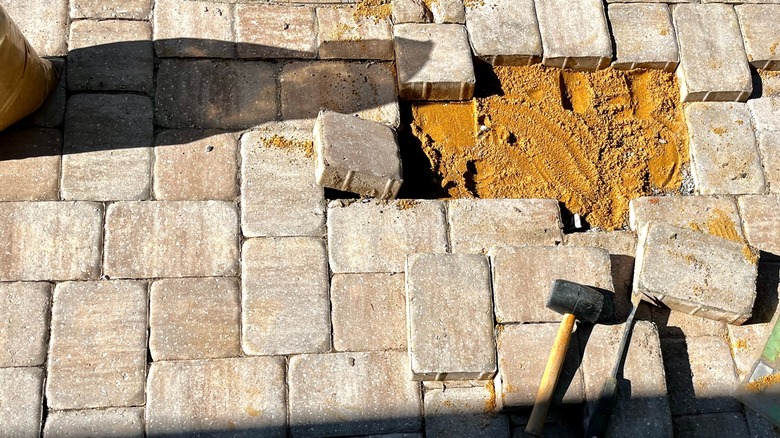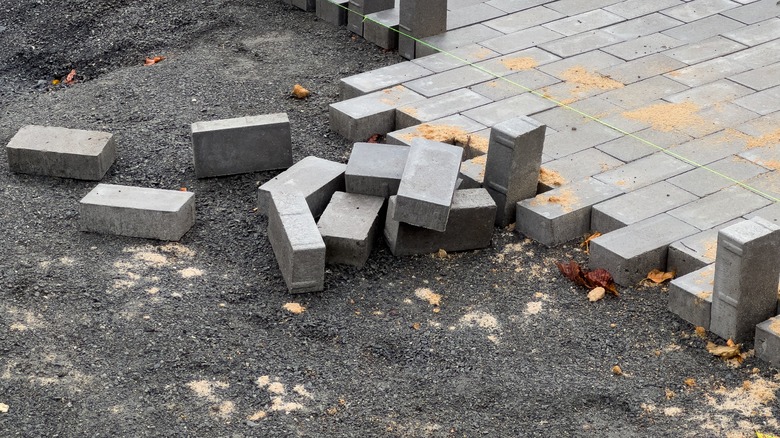Sand Vs Gravel: Which Material Is Better To Lay Under Pavers?
Pavers are one of the most popular options for creating a beautiful patio or walkway. They're versatile and come in various shapes, colors, and materials, allowing for a lot of creativity. But before you start laying them, you need to ask yourself what you're going to put underneath them. This isn't a minor question you can brush off. Sure, pavers are durable, withstanding the elements and heavy foot traffic without cracking or breaking. But without a solid foundation, they won't stand the test of time.
So, what are the options? The two most common are sand and gravel, and both have their fans and foes. Fine, granular sand is durable and adaptable, which can turn paver installation into a breeze. But chunky gravel is, in many ways, easier to use, which tempts many newbies. It's essential to understand what each brings to the table — or should we say the ground? — before getting started.
The case for sand
Let's start with the sandy side of things. One major advantage of using sand is that it's highly compactable. When you pack it down, it creates a sturdy base that can support your pavers well. Plus, sand is durable, meaning your pavers won't shift over time, keeping your outdoor space looking sharp.
However, sand can be a bit tricky to work with. It doesn't always behave as you'd like, especially if you're new to the paver game. You may find yourself wrestling with it instead of smoothly laying down those pavers. Plus, you might need heavy equipment to spread and compact the sand properly, which can be a hassle for the average DIYer. The process could become a real workout if you don't have access to machinery or experience.
So, who should consider using sand to lay under pavers? Sand is an excellent choice if you value a strong and stable base and don't mind investing some elbow grease and equipment. It can lead to fantastic results for those working on large projects with the necessary tools. It's also great for areas that experience heavy use and will look wonderful when installed properly. However, you might want to keep your options open if you prefer a more straightforward approach.
The gravel advantage
Using gravel for laying pavers has its own set of perks. First off, gravel is super easy to install. You can just spread it out and level it off with a rake — no fancy equipment is needed. This means you might save a bit of cash if you tackle the project independently. Gravel also has excellent drainage properties: The gaps between the gravel allow water to flow easily, reducing the chances of puddles forming under your lovely pavers. Plus, it's cost-effective, often coming in at a lower price than sand.
However, gravel isn't without its issues. One major drawback is spillage. If you're not careful, those little stones can escape their designated area, leading to a less-than-polished look. Also, if not installed properly, gravel can create ruts over time, especially in high-traffic areas. These ruts can cause your pavers to become uneven, leading to an eyesore rather than the gorgeous patio you envisioned.
Gravel for laying pavers is for DIY novices who want a hassle-free installation experience. It's also ideal for those on a budget or working on a smaller project where heavy machinery might not be needed. It's also worth keeping in mind that gravel looks best in casual outdoor spaces like garden paths or backyard patios, where aesthetics are important.


